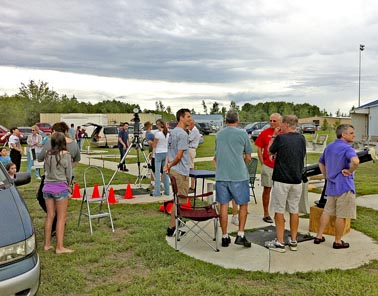
(L-R) Gentle Carousel Trainer/Owner Jorge Garcia-Bengochea, Billy, an unnamed orphan and Marine Raftopoulou, volunteer coordinator at Gentle Carousel Greece.
HIGH SPRINGS – Travelling from the small town of High Springs to a mountain orphanage in Greece is a journey most horses probably haven’t undertaken.
Members of the local organization Gentle Carousel Miniature Therapy Horses have returned from Greece after helping set up Gentle Carousel Greece, a therapy-horse program to focus on special needs children and children living in orphanages. Charity founder Jorge Garcia-Bengochea and members of Gentle Carousel Greece met with nuns running isolated mountain orphanages to explain the therapy program and how much it could help the children in their care.
They were encouraged by how well the program was received and look forward to regular Gentle Carousel Miniature Therapy Horse visits with the children in their remote settings.
Because the orphanages are so isolated, the children get little exposure to the outside world and visitors, Garcia-Bengochea said. Visits with the children help broaden their perspective on life. In addition, miniature horses live quite a long time. The children will grow up with the same horses throughout their childhood in most cases, he said.
In Greece, adoption is not an option for children without parents. They stay in orphanages with other children and the nuns until they are adults. “They are a family unit. The older children help take care of the younger ones like they would in a regular family setting,” he said.
The Greek Olympic Equestrian Team contacted the High Springs group, asking if they could set up a sister program in Greece.
“They were willing to provide stables, full-time trainers, vehicles to transport the horses and sponsorship money for their program if we would consider setting up a program for them,” said Debbie Garcia-Bengochea.
Greece has a strong equestrian history and honors one of the most famous actual horses of antiquity, Alexander the Great’s horse Bucephalus, on Greek coins and statutes.
“We considered it carefully before agreeing to do it. We knew we couldn’t afford to set up another program anywhere. The cost of transportation for the two of us back-and-forth to Greece and sending our horses to Greece was a major concern,” she said. “However, they were willing to pick up the entire cost of setting up the program and had an extensive amount of public and governmental support. Plus, this would remain our program. We will train the trainers and oversee every step of the program because it is a Gentle Carousel program.”
The couple said they would like to have been able to set up other Gentle Carousel programs in the United States, but the charity is operating on a shoestring as it is. “We just couldn’t afford the cost to set up a program without outside help,” she said. “While we do get donations to our charity, both Jorge and I still work to be able to maintain the program we have now,” she said. “In addition, some of our sponsors have withdrawn their support because we decided to set up a sister program in Greece. They were disappointed we didn’t do it here first, but there was just no way we could do that financially,” she said.
Better known nationally and internationally than locally, the Gentle Carousel founders received an overwhelming welcome on their recent trip to Greece. “We went over to train the trainers, talk to the people involved and the nuns at the orphanages to help set up the program,” said Debbie Garcia-Bengochea.
During their visit, the Mayor of Rafina, Yiorgos Chritopoulos, expressed support for the organization.
“Gentle Carousel Miniature Therapy Horses have long supported the sick, the elderly and those living in difficult situations in the United States,” he said. “It is my honor to now welcome this special charity to Greece where they will be an encouragement to the most vulnerable members of our community and bring a common bond of hope between our two countries.”
George Frangogiannis, two-time national show-jumping champion and a member of Greece’s national team welcomed the couple.
“I am thankful that young children challenged by sickness and the elderly of Greece, who might never have the opportunity to know the love of a horse will now have that experience,” he said.
While the Garcia-Bengocheas are back in Florida, they are Skyping with the Greek trainers as they work with the horses in Greece and are preparing to send six more of their own trained horses over to Greece soon. The couple will go back to Greece to work further with the Greek trainers and get the program started.
# # #
Email cwalker@
alachuatoday.com
Add a comment

 NEWBERRY –
NEWBERRY –  ALACHUA – John Maloney watched from the audience as his stepdaughter, Kaylee Mines, followed in his footsteps and took the pledge.
ALACHUA – John Maloney watched from the audience as his stepdaughter, Kaylee Mines, followed in his footsteps and took the pledge.